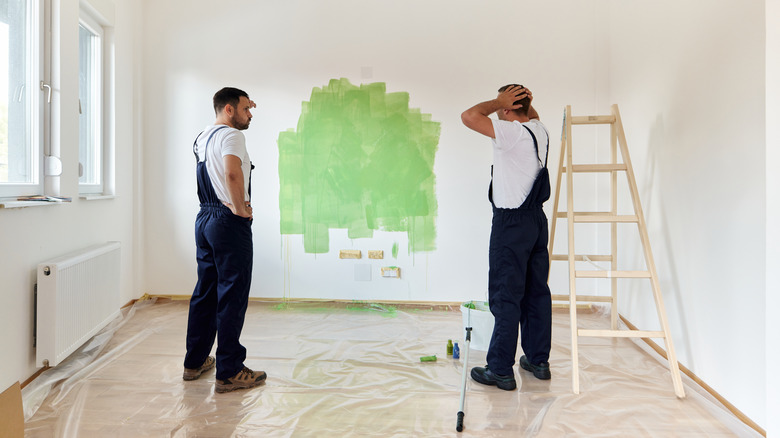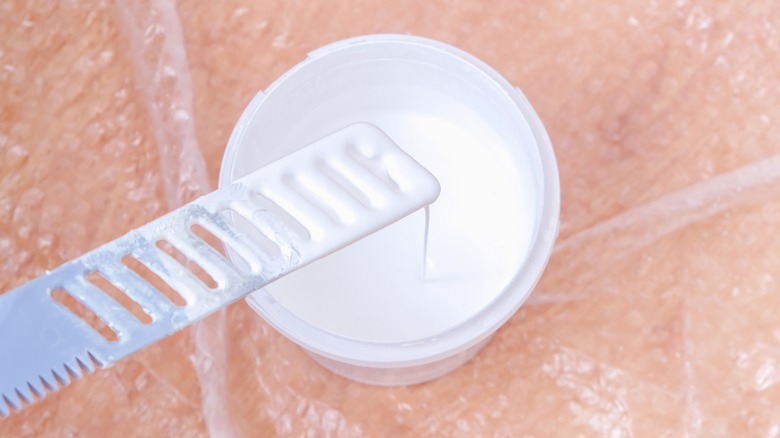Why Mixing Your Paint Before Every Use Is Crucial For A Professional Finish
After you test paint colors and make a commitment, you may notice that the associate at the paint store puts the cans into a machine to blend the paint. There are two reasons for this. Yes, it's perfecting the exact shade you want, but that vigorous shaking is also necessary to get just the right texture. If you don't mix your paint before every use (and not just once at the store), the paint eventually separates into liquids and solids which, if used in that condition, will get you a totally unreliable finish with uneven color, shine, and coverage.
Because those paint mixing machines shake or rotate your paint fairly aggressively to really mix it up, you may feel lulled into believing that once that process is finished, the paint is officially ready to go. Well, it is, but only if you use it that same day. If you open up your can a few days or weeks later, separation will have already started taking place. The first casualty of insufficiently mixed paint will be the coverage, meaning it can be thick in some places and thin in others. Patchy walls look like an amateur paint job, and you definitely don't want that.
Color and sheen suffer if your paint is unmixed
Let's say you picked just the perfect shade of buttercream, terra cotta, or vibrant teal. If you dip your brush or roller in unmixed paint, say au revoir to your beloved hue and hello to streaks and globs. You want consistent color on every inch of those walls, don't you? That's why it's crucial to mix your paint.
Your paint's finish will also be affected if you apply it unmixed. Finishes range from flat to gloss, with each one successively more shiny and light reflecting than the previous. With unmixed paint, it's anyone's guess what type of finish you'll get, and chances are some areas will reflect more light than others because the proportion will be different with every dip of your brush.
Therefore, do this if you want to paint your home like a pro: Each time you're ready to paint, shake the can and then use a wide paint stirrer to thoroughly stir from the bottom up. Items like a wooden dowel or screwdriver won't mix it well enough. Don't forget to shake and stir the primer, ceiling, and trim paints too. Shaking only applies to acrylic paints; don't shake oil paints because they'll form bubbles once applied to the wall.

